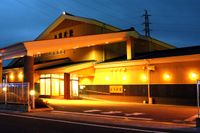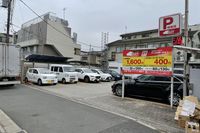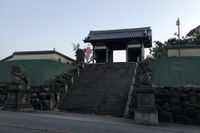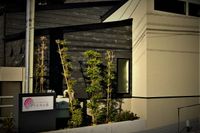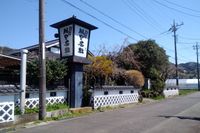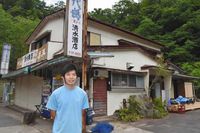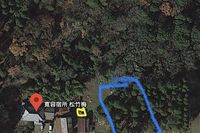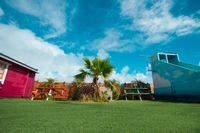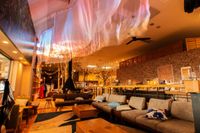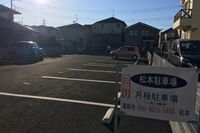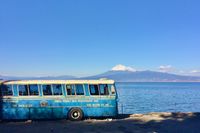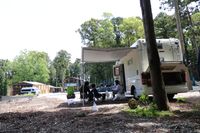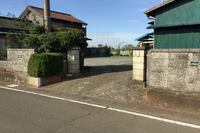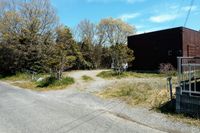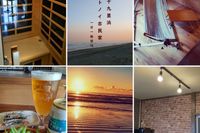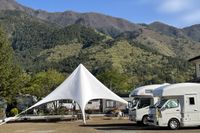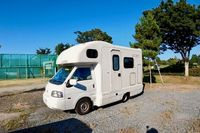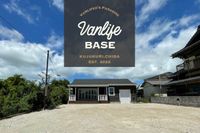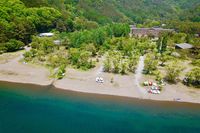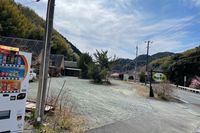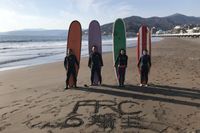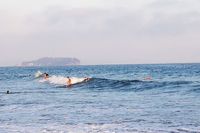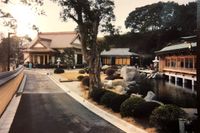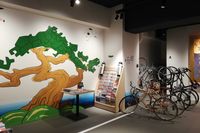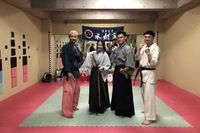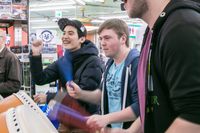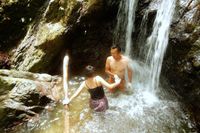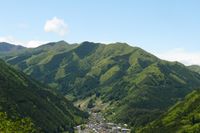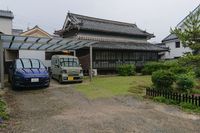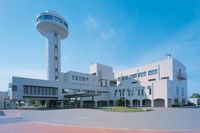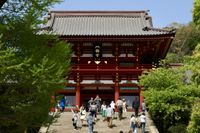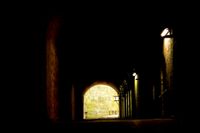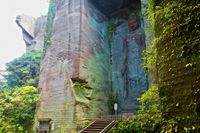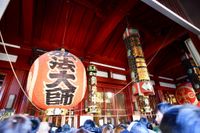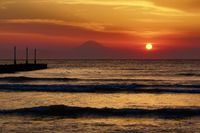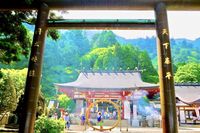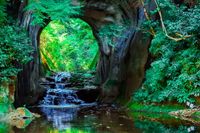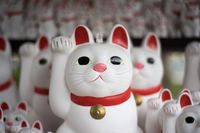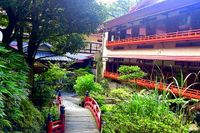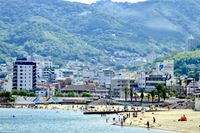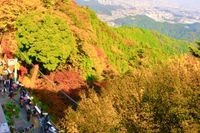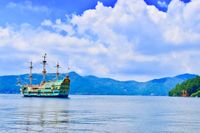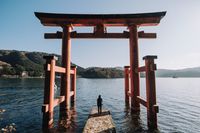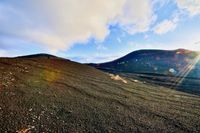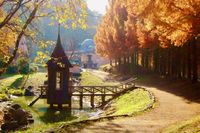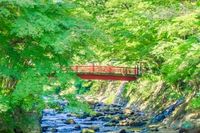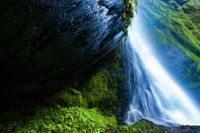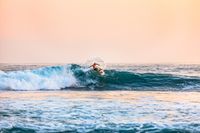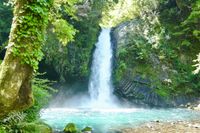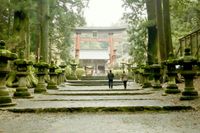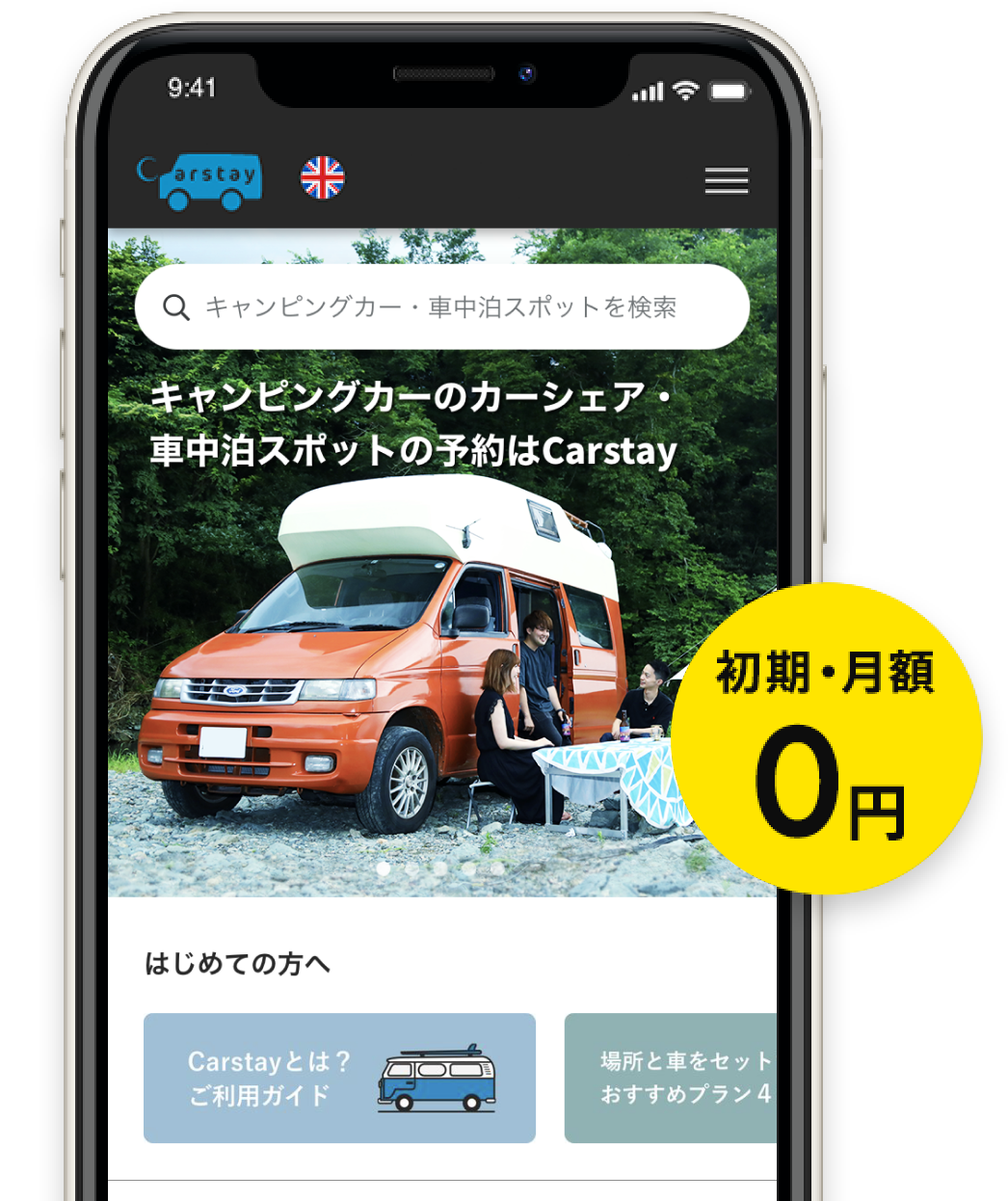
Hayama RV-SITE by Star Home
Description
Available in English! 10 km from Kamakura/Enoshima. It is conveniently located 1 km away from the expressway Zuyou Shindo tollgate which is 30 minutes away from Haneda. You can enjoy sea activities, BBQ and sightseeing in Shonan/Miura Peninsula in the calm nature of Hayama Town, Kanagawa Prefecture. Each space is equipped with AC power, water and wood deck. You can also make a bonfire. The dog run is scheduled to open next spring. In the neighborhood, there are hidden restaurants that are featured in TV programs and bakeries where people line up from the morning .
Basic Facilities
Additional Fee Facilities
Nearby Facilities
Parking space
Note
【お知らせ】 葉山の自然の中、自分時間を愉しみ人生を豊かにする秘密基地的な存在になればと思っております。 --------------------------------------------- ▶️▶️▶️施設利用案内動画はこちらから◀️◀️◀️ RV車中泊Site https://youtu.be/6itcO-UEoD4 ★★【ご利用の際は必ずお読みください】★★ ■■現在、焚火やBBQの煙問題が出ております。慣れていない方が薪や炭に着火する際はバーナーや着火剤を上手に使用してください。(直火禁止、必ず防火シート+備え付けの防火板をご用意ください) 煙が多く出る場合は薪の調整、炭の調整をお願いたします。薪の入れすぎ、炭の入れすぎ注意です。 ※焚火は16時~21時、スタッフの方で焚火のチェックを行っておりますので注意してください。 ※万が一、デッキを燃やしてしまった場合は修理費を頂きます。板を3枚燃やし(大きさにして40cm大)修理にかかった工事代金は3万円になっております。木材の高騰もありレッドシダー材は高級な木材となっています。 焚火に関して不安がある、分からない事がありましたらお気軽にお電話ください。 直通電話 090-6273-0138(対応時間9~17時半) ◇燃やした、焦がした時は必ずご連絡ください。 ----------------------------------------------------------------------- ◆◆長期滞在の方◆◆はお電話にてご相談ください。 HAYAMA RVsite&TENTsite 直通電話 090-6273-0138(対応時間9~17時半) ※担当者が1人で対応しておりますので、時間帯によっては出られないことがございます。その際は折り返しご連絡を差し上げますでご了承ください。 ----------------------------------------------------------------- 【RV site説明】 ●チェックイン14:00~チェックアウト翌11:00となります。(平日はチェックイン11:00) ・RV site Carスペース4台分:巾2.6m×長さ6m(3台)~7m(1台分)×高さ制限なし ・RV site:AC電源、水道付き、ドッグリードフック付き、シャワー使用料(¥5,500-の中に使用料金が含まれています) ・RV site専用デッキ(駐車場と同じサイズ)が隣接しております。 (各サイト専用デッキに45cm×45cmの白い下敷きがございます。焚火シートの上に防火板を乗せて焚火台をお使いください)。焚火シートだけではデッキは燃え上がります。 ・プライベートデッキは2m×3m程度のテントなら設営可能です。 ・アーリーチェックイン料金 ※11:00~(¥3.000-)ポイント使用の場合は3ポイント使用となります。 ※12:00~(¥2.000-)ポイント使用の場合は2ポイント使用となります。 ※13:00~(¥1.000-)ポイント使用の場合は1ポイント使用となります。 ◇ご不明点は遠慮なくお申込み前にお電話ください。 直通電話 090-6273-0138(対応時間9~17時半) ----------------------------------------------------------------------------- ■■■キャンセルについて■■■ ◎キャンセルの手続きはCarstayからお願いいたします。お電話でのお問い合わせが多くありますが 電話でのキャンセルはできません。お間違えの無いようにお願いいたします。 また、お客様の御都合、天候等によるキャンセルの払い戻しはいたしませんのでご注意ください。 ●RVサイト、テントサイトご利用の方はドッグランが1時間無料となります。 ●BBQに関しては、BBQ開始から3時間で終了してください。(例:15時BBQ~18時終了~18時焚火orBBQ~21時終了)こんな使い方もできます。 ●共用外流し、共用シャワー室完備(¥5,000-の中に使用料金が含まれます。シャワー使用可能時間はam7:00 ~pm21:00まで。近隣住民の方にご迷惑が掛かります。時間厳守、お静かにご利用お願い致します。) 共用の外流しに生ごみを流す方が見受けられます。生ごみは捨てないようにお願いいたします。 ●トレーラーハウス牽引の場合、牽引車両は別途¥1.100-を頂きます。駐車場の込み具合によっては牽引車両は隣接する隣の駐車場(砂利敷き込み)に止めて頂きます。スタッフがご案内いたします。現地清算でお願いいたします。 ●RVサイト、テントサイトをご利用の方はドッグランを1時間無料にてご利用可能です。 (但し、ドッグランサイトをテント泊でご使用中はご利用いただけません。) ◆RVSiteの敷地隣にテントサイトが隣接しております大型ウッドデッキエリア、ウッドチップエリア等でのテント泊の場合のみ別途現地支払いにて1 張3.500円(RVサイトご利用者価格です。通常7.000円)をいただきます。詳細はお問い合わせください。 ◆館内の設備位置は写真説明にあります全景案内地図をご覧ください。または現地玄関前に備え付けの地図がございますのでご現地にて確認いただけます。 ◆館内にご利用するための注意書きがございますので必ずお読み頂きご利用されますようお願いいたします。◆ -------------------------------------------------------------------------------- 【注意事項】 RVサイトはキャンプ場ではありません。隣の車との距離もキャンプ場に比べ近い状態です。 焚火も小さめの炎で隣の方がいる場合はお互いに迷惑にならないようにマナーを第一にご利用ください。21時を過ぎての談笑も問題になっております。 ◆◆施設内での【音楽】【遊具】【花火】は禁止です。今後の運営にもかかわる問題ですので注意してください。近隣の方のご迷惑にもなりますので【PM9:00以降】はご就寝お願い致します。(pm9:00より防犯カメラが作動しパトロールに入ります。ご注意ください。) ◆トイレは公共のトイレではありません。次の方が気持ちよく使えるように心がけてください。また、トイレ内のゴミ箱にゴミなど捨てないようにお願いいたします。 ◆ご予約はセルフチェックインを行っております。QRコードをお読みになってから速やかにお進みください。 ◆チェックイン時間を超える場合は、ご連絡を頂けるとありがたいです。チャットまたはお電話でご連絡をお願いいたします。また、Carstayチャットでのご連絡ですが、お申し込み後、ご連絡をしても気が付かない方が多くおられます。なるべくチェックして頂き連絡が取れるようにお願いいたします。 ◆夜間から早朝にかけてゴミが野生の動物に荒らされ散乱しているのを見かけます。できましたら個人の専用コンテナBOXや袋を二重にして車内または車の屋根に乗せゴミの保管をお願いいたします。(リス、狸、アライグマ、ハクビシン、カラスが近くの森に生息しています) ◆Carstayチャット対応時間:am9:00~pm17:00です。担当者が離席している場合は返信が遅れる場合がございます。また時間外のチャット対応は翌日になります。ご了承くださいますようお願いいたします。お急ぎの方は、tel:046-876-6776までお問い合わせください。 ◆最近になり、敷地内及び館内のゴミ箱、トイレのゴミ箱等にゴミを捨てている方がおられます。また外流しの排水口に生ごみを捨てないでください。ゴミは責任をもって自主回収をお願いいたします。最近女子トイレのゴミ箱に歯ブラシ、コンタクトレンズの入物、ペットボトルが捨てられています。紙以外のゴミは捨てない様にお願いいたします。トイレ内のゴミ箱は手拭き用の紙を捨てるゴミ箱です。 ------------------------------------------------------------------------------------------- 【HAYAMA RV site 近隣での楽しみ】地図をご用意しております。お声がけください。 『食』期限なし ・ブレドール葉山(美味しいパンで有名なお店):RVsiteより車で5分 ・葉山 日影茶屋(日本料理、和菓子、仕出し弁当):RVsiteより車で10~15分 ・ショッピング PLAZA HAYAMA STATION:(葉山の有名処が集まったお店です。夜の食を楽しみたいならここがお勧めです)、逗葉新道出口より車で1分、RVsiteより車で5~10分 『海』:お勧め6月上旬~9月末まで ・3キロ圏内に(森戸海岸、一色海岸、大浜海岸)シーカヤック、サップ、ヨット、ウインドサーフィン等の体験ができるショップが沢山ありますので是非検索してみてください。 ※葉山オーシャンスポーツ:TEL 046-874-4796(当日の予約は難しいと思います) ※コアアウトフィッターズ:TEL 046-858-0180(当日の予約は難しいと思います) ※その他Googleネットでの検索をお勧めいたします。 『山』:お勧め10月~6月末(夏は低山のためかなりの暑さになります) ・大楠山 241m 往復2~3時間:ハイキング初心者~(RV siteより10分、車で無料駐車場あり、キャンピングカー駐車可能:2020年現在、湘南国際バスターミナル前に無料駐車場あり) ・仙元山 118m RVsiteより往復2~3時間:ハイキング初心者~アップダウン(中)途中階段多い ・乳頭山 200m RVsiteより往復3~4時間:ハイキング初心者~アップダウン(中) ・二子山 207m RVsiteより往復3~5時間:ハイキング初心者~アップダウン(中)軽い鎖場あり ◎低山ですが険しい場所、遭難もありますので装備は確りと準備してください。 ◎地図・コンパス・ライト・水等、登山に必要な道具は必ず携帯してください。 【人工芝、ウッドデッキ使用の注意】 ・人工芝、ウッドデッキは貸切ができるサイトです。他の方への貸切使用の際にはご利用できませんのでご注意ください。貸切の場合は【貸切】と掲示されます。 ・人工芝、ウッドデッキでの飲食は可能です。備え付けのテーブル、カウンター使用でお願いいたします。ゴミの片付けは責任をもってお願いいたします。火気厳禁です。 ・ウッドデッキ(Rv専用デッキ以外)でのテント泊はRv Siteとは別に1張り別途¥3.500-(RVサイトご利用者価格)になります。ウッドデッキではテントのみのご利用になります。テント、タープの場合はウッドチップサイトをご利用ください。 ・人工芝はワンちゃんも入れますが、必ずオシメ使用でお願いいたします。 ・ペットの排泄物は飼い主の方が責任をもってお片付けください。尿には水または木酢液を薄めたものをかけてください。糞はビニール袋に入れお持ち帰りください。 【よくあるご質問】 Q:RVSite横の専用デッキにオーニング用のペグを打ち込むことはできますか?またはどの様にガイドロープを固定すればよいですか? A:市販のウッドデッキ専用ペグをご利用ください。または、一般のペグの中心にガイドロープを結びデッキの隙間に落としデッキ溝より90度にペグを動かし固定してください。またデッキに穴をあけたりすることは禁止です。 Q:車を施設の建築物にぶつけて破損してしまった。 A:必ず館内にいるスタッフにお声がけください。またはチャット頂けるとありがたいです。または、Carstayにチャットして報告をお願いいたします。 Q:焚火をする場合、薪の販売はありあすか? A:※火を育てる楽しみができる薪を販売しております。1束7~8キロあります。火口になるものが付属されています。薪が売り切れの場合は永津材木店 TEL 046-878-7853 こちらの材木店で購入可能です(RVsiteより車で5~10分) Q:少し早く到着しそうなのですが・・・。 A:アーリーチェックイン料金 ※11:00~(¥3.000-) ※12:00~(¥2.000-) ※13:00~(¥1.000) Q:ゴミ、灰等の捨て場はありますか? A:大変申し訳ございませんが葉山ではゴミの分別が大変厳しい場所です。その事を踏まえトラブルを避ける為にゴミはお持ち帰り頂く事にしております。ご了承くださいますようお願いいたします。焚火やBBQの薪や炭は燃やし切ってから指定の『灰捨て場』に捨ててください。 Q:花火はできますか? A:館内は花火及び遊具、球技、スケートボード等の遊びも禁止になっております。他のキャンカーを傷つける恐れのある遊びはおやめください。また、お隣のご利用者様にご迷惑にならないようにお願いいたします。 Q:近隣にストアー、コンビニはありますか? A:ストアー、コンビニが車で5~10分の所にございます。グーグルマップでの検索をお願いいたします。 Q:犬と車中泊を考えてますがノーリードOKですか? A:館内ではノーリードは事故防止のため禁止です。ご了承くださいますようお願いいたします。ウッドデッキまたはウッドチップサイトでもノーリドは禁止です(他の利用者様とワンちゃんの事故防止のため)。RVサイト、テントサイトご利用の方はドッグランが2時間無料となっております。是非、ご利用ください。 Q:RV site横のウッドデッキにテントを張りたいのですがどれぐらいまでの大きさならはれますか?。また専用ウッドデッキにテントを張るのに料金はかかりますか?。 A:2m×3mサイズの範囲であればテントを張ることは可能かと思います。RVsiteご利用で専用ウッドデッキに限りテントやタープ、オーニングをはられても料金はかかりません。 Q:アウトドアー用品(テント、タープ、焚火台、ホワイトガソリン、炭等)の貸し出し、販売はありますか? A:貸し出し、販売はございません。炭は数が少ないですが販売しております。購入の際はお電話にてご確認ください。 Q:携帯の電波状況はどうでしょうか A:携帯の電波状況(docomo/au/softbank)は問題なく使用できます。また館内では無料のWi-Fiがご利用できます。 Q:キャンピングカーを置いて海まで行きたいのですが移動手段を教えてください。 A:HAYAMA RV Siteの道路反対側にタクシー会社がございます。または、目の前に京急バスをご利用していただく事になります。または、長者ヶ崎駐車場であればバンコン、キャブコン、バスコン駐車が可能です。駐車場下が海水浴場になっておりますので便利です。【レンタル自転車もございます。(チェックアウトまで¥1100)】 Q:EV充電用コンセントはありますか? A:1台分ございます。 Q:RvSite横の専用ウッドデッキでのBBQや食事はできますか?料金はかかりますか。 A:専用ウッドデッキでの食事は無料です。専用ウッドデッキでの焚火はウッドデッキに置いてある白い板の上で焚火台を使用して行ってください。焚火可能時間は18:00~21:00です。(近隣住民の方とのお約束になりますので かな必ずお守りください。ご協力何卒お願い致します) --------------------------------------------- ▶️▶️▶️施設利用案内動画はこちらから◀️◀️◀️ ▶️▶️▶️施設利用案内動画はこちらから◀️◀️◀️ RV車中泊Site https://youtu.be/6itcO-UEoD4
Cancellation Deadline
Availability status
Sun | Mon | Tue | Wed | Thu | Fri | Sat |
|---|---|---|---|---|---|---|
26 | 27 | 28 | 29 | 30 | 31 | 1 |
2 | 3 | 4 | 5 | 6 | 7 | 8 |
9 | 10 | 11 | 12 | 13 | 14 | 15 |
16 | 17 | 18 | 19 | 20 | 21 | 22 |
23 | 24 | 25 | 26 | 27 | 28 | 1 |
Sun | Mon | Tue | Wed | Thu | Fri | Sat |
|---|---|---|---|---|---|---|
23 | 24 | 25 | 26 | 27 | 28 | 1 |
2 | 3 | 4 | 5 | 6 | 7 | 8 |
9 | 10 | 11 | 12 | 13 | 14 | 15 |
16 | 17 | 18 | 19 | 20 | 21 | 22 |
23 | 24 | 25 | 26 | 27 | 28 | 29 |
30 | 31 | 1 | 2 | 3 | 4 | 5 |
Reviews



年末に使用しました 設備がしっかりしてるしデッキも広くて朝晩ゆっくり過ごさせて頂いきました 社員さんも皆さん感じよくて挨拶させて楽しくすごせました 機会があれば是非またお寄りしたいです!

久しぶりの葉山キャンプでしたが、施設も充実してとても快適に過ごせました。 年内にもう一度と考えています。




近隣のマーロウのMARLOWEEN・葉山ステーション・翌朝10時から現地に駐車したまま徒歩3分の喫茶ジョーを満喫。葉山って本当 素敵




















